Oltrepo Pavese – Italy’s Secret Magical Secret Region
Setting the place
Oltrepo.Pavese – Beyond the Pavia (the river Po). Below the Po.
Tucked away in a corner of Italy that it a corner of Lombardy, but closely aligned to Piedmonte, Oltrepo Pavese is a hidden gem that is mostly undiscovered.
After the Wine Media Conference in 2022, I was able to attend an additional press event, to tour the wineries of Oltrepo Pavese, which has primarily, remained undiscovered to all but the most intrepid of Italian wine explorers.
Forming a (mostly) triangular area, Oltrepo Pavese is bordered by the river Po, the Apennine mountains, Piedmonte to the west and Emilia-Romagna to the east.
The 70,000 hectares of vineyards vary in terrain, from steep terraced slops on the hillsides, to small plots in isolated valleys. While the summers are hot, they are moderated by geography – with cooler winds coming down from the nearby Apennines.
With a long history of winemaking dating back to the ancient Etruscans, Oltrepo Pavese boasts a diverse range of wines that showcase the unique terroir of the region.
While it may not be as well-known as it’s neighbors, the Oltrepo Pavese wines are outstanding. The area is becoming more known to Italians as a local gem and is most famous for its sparkling wines, which are approximately 50% of the total production. Oltrepo Pavese is also known for its Nebbiolo, which is often a fraction of the price as it’s famous neighbor and ally, Piedmonte.

With a somewhat dented reputation a place based on it’s former life as a large bulk wine hub, Oltrepo Pavese is home to a fair amount of experimentation and young winemakers bucking the trends and rules that so often restrict Italian producers.
These winemakers are pushing the boundaries of what is possible with winemaking in Italy, experimenting with new techniques and varietals to create unique and exciting wines.
Can't afford the high price of Barolo? Barbaresco? Piedmont Nebbiolo? Try Oltrepo Pavese!
Another trend that is gaining momentum in Oltrepo Pavese is the use of non-native grape varieties. While the region is renowned for its Nebbiolo, winemakers are now experimenting with popular international grapes like Chardonnay, Sauvignon Blanc, and even Pinot Grigio.
This not only allows for greater diversity in the region’s wine offerings, but it also highlights the unique terroir of Oltrepo Pavese and the adaptability of its winemakers.
This also helps new wineries get on the map with a wider audience, and potential for recognition and sales. This, hopefully, will lead to further sales of more austere bottlings.
The rest of the story
As we begun our adventures exploring Oltrepo Pavese, I’ll be visiting several wineries, as well as local restaurants – to give a glimpse at the cultural cross roads that developed here.
Overall, the region’s cuisine is a true reflection of the region’s rich culture and history.
Despite being part of Lombardy, Oltrepo Pavese has historically been more closely aligned with Piedmont, both culturally and politically which is reflected both in the wine and the food culture that exists here.
One of the most traditional dishes of Oltrepo Pavese is the Tortelli con la coda, which consists of large pasta pockets filled with ricotta and Swiss chard, served with a meat-based sauce.
When it comes to cheese, Oltrepo Pavese is home to several varieties, including the delicious creamy Robiola and the tangy Grana Padano. These are perfect to pair with a glass of local wine to complete the culinary experience.
For those with a sweet tooth, the region also offers a variety of desserts, including the famous Torta Paradiso, a light and fluffy cake made with egg yolks and almonds, and the Torta di Riso, a rice pudding cake flavored with lemon and vanilla.
In addition, the countryside of Oltrepo Pavese offers a wealth of fresh ingredients, such as mushrooms, truffles, chestnuts, and game meats, which all contribute to the regional cuisine’s unique and rich flavors.
Lorem ipsum dolor sit amet, consectetur adipiscing elit. Ut elit tellus, luctus nec ullamcorper mattis, pulvinar dapibus leo.
Steeped in tradition.
Off the beaten path.
Innovation.
Oltrepo Pavese.
Next up...the wines! Stay Tuned
Antiquum Farm Winery -From Farm to Bottle
Tucked away on a tranquil country lane in rural Lane County, Antiquum Farm is a true working farm that embodies the concept of bio-diversity, making it stand out from the rest.
If you’re a wine enthusiast, you don’t want to miss their pinot noir, as well as the several unique wines they offer. However, what makes Antiquum Farm so special is their cross-functional farm use, which includes animals such as sheep, pigs, and even veggies. The practice of “grazing based viticulture” guarantees that each member of the family, from animal to human, contributes to the sustainability and ecosystem of this working farm.
Although this hidden gem may not be on your radar during a search for wine, Antiquum Farm’s dedication to bio-diversity and sustainability make it a unique destination worth visiting in Oregon’s Willamette Valley.

Sustaining a Healthy Farm Ecosystem
Sustainable farming means different things to different people. But here at the Farm, it means creating a closed ecosystem where everything works together to foster a thriving and sustainable farm.
Maintaining such an ecosystem in a vineyard and winery is not without its challenges. Achieving the right balance is an ever-evolving process.
One of our strategies in the vineyard is to use cover crops as grazing food for our farm animals. These cover crops are selected not only to feed the animals but also to nourish the vineyard.
When the animals consume the cover crops, their roots decompose, leaving behind a rich microbial community that supports the next cycle. This contributes to the biodiversity of the vineyard and fosters a living, breathing soil base. Chemical fertilizers, soil treatments, and other chemicals that can alter the local ecosystem are simply not needed.
By prioritizing the health of our ecosystem, we at the Farm have created a sustainable farm that provides nourishing produce and wine to our community.
Sustaining a Healthy Farm Ecosystem
Sustainable farming means different things to different people. But here at the Farm, it means creating a closed ecosystem where everything works together to foster a thriving and sustainable farm.
Maintaining such an ecosystem in a vineyard and winery is not without its challenges. Achieving the right balance is an ever-evolving process.
One of our strategies in the vineyard is to use cover crops as grazing food for our farm animals. These cover crops are selected not only to feed the animals but also to nourish the vineyard.
When the animals consume the cover crops, their roots decompose, leaving behind a rich microbial community that supports the next cycle. This contributes to the biodiversity of the vineyard and fosters a living, breathing soil base. Chemical fertilizers, soil treatments, and other chemicals that can alter the local ecosystem are simply not needed.
By prioritizing the health of our ecosystem, we at the Farm have created a sustainable farm that provides nourishing produce and wine to our community.
Terroir. The complete natural environment in which a particular wine is produced, including factors such as the soil, topography, and climate. The characteristic taste and flavor imparted to a wine by the environment in which it is produced.
-Webster's Dictionary
A little something different
Ever the creative, winemaker, Andy Bandy-Smith decided to approach the Pinot Gris a bit differently. Taking clues from the production techniques of Sherry, a solera system was devised with the intension of showcasing the terroir of Antiquum Farm.
The Pertpetua Album is a blend of Daisy, Arossa and Alium – each with a different site, and different ripening times int he harvest cycle. The combination of these three sites creates a unique blend. But it doesn’t stop there.
Much like a solera aged Sherry, this Pinot Gris is a fractional blend of several vintages – taking bits of 2019 and 2019. The goal is to eventually be able to show several decades of vine age, as the vineyard matures, and crate a blend of fruit from 10, 20 and 50 year old vines.
Perpetua Album started as 1000 liters of Daisy Pinot Gris. That first year 50% was pulled out, and replenished with 50% of the next vintage. Each year after that, 75 cases is pulled out and replenished with the current vintage.
Here, with a perpetual wine, the path is paved for future generations to connect with the past in a single bottle. That’s what I call generational agriculture.
To say this wine is different doesn’t do it justice. Yes, it has classic Oregon Pinot Gris characteristics, but it’s also not at all classic Pinot Gris.
The brilliant golden color is a freshly cut pineapple, and the flavors and acidity cut through the viscosity and leaves a minerally crisp finish. Full of pineapple and mango, as well as preserved lemon, the mineral finish is dusted on a piece of juicy-fruit gum.
A hint of salinity comes through on the finish, with crisp Asian pears.
It is really a wine that requires some thought to drink, but is worth every minute.
What we've discovered over time is that if you truly can isolate your place, and forget about adding soluble nutrient inputs, forget about tillage, forget about herbicide use, that your vineyard can become untethered from expectations around region or varietal and things will truly begin to behave in way s that are completely unexpected.
Antiqueum Farm Tweet
In addition to the Perpetua Album, there is a Perpetual Pinot Noir, and three distinct Pinot Noirs that come from specific sites on the vineyard.
Perpetua Rubrum Pinot Noir I is the sister to the Perpetual Pinot Gris, where previous years of Pinot Noir are blended with parts of the current vintage to create a blend.
Finally, the Perpetua Rubrum follows the methodology of the Perpetua Album, where a multi vintage “best of the best” selection is blended to highlight the best of the terroir. Made in a 1000 liter barrel, 50% is bottled each year. After that, it is replenished with the current vintage, and so on.
The Perpetua Rubrum was made to intentionally look deeply into the heart of terroir, tracing the perpetual line of both grape and vine. Making wine from every section of the properties Pinot Noir vines, it is a fascinating look at the local flavors.
The Juel Pinot Noir is a cross representation of the Pinot Noir sites, which total 14.5 acres. It sits at about 800 feet, which is one of the highest point in the Belle Pine site. Belle Pine soil is unique in this area, which avoiding the Missoula Floods, and is made up of decomposed lava (which were once under the sea), and has marine sandstone and salt parent material. The top soil here is only 7-24 inches thick, which makes very open vine structures. This helps balance the fruit, which is one of Andy’s primary goals.
The Juel is a blend of the six selections of Pinot Noir grown at Antiquum Farm, based on a few “optimization picks”, where fruit has reached its peak expression. Some of the fruit is left on the vine, and then picked in a “snapshot pick’. – or the Enchilada.
Here, a ton of fruit is picked from each clonal block is picked on a single night, which forms the backbone of the Juel. More optimizing picks are done to add that spice to the Juel.
There is also the Perpetua Rubrum Pinot Noir, which is made in the same style as the Perpetua Album.
Pulling each aspect of the vineyard sites out and making not only separate wines from the sections, but utilizing staggered picks to adjust the flavor profiles in each distinct wine, allows Antiuquum Farm to really showcase the unique aspects of this micro-section of the lower Willamette.
While the most recent vintage is sold out, Antiquum Farm is selling futures of the 2021 wines now.
If you are in the region of Eugene, be sure to make a point of visiting this unique part of Oregon!
Tucked away in the southwestern corner of Lombardy, Italy lies the stunning wine region of Oltrepo Pavese. While it may not be as well-known as neighboring Piedmonte and Tuscany, the wines produced here are a real treasure for wine lovers. The area is famous for its sparkling wines, which actually account for more than half of its wine production. These wines are made using the traditional method and offer a crisp and bright taste. In addition to the sparkling wines, Oltrepo Pavese is also known for producing a variety of other wines, including acid-driven Pinot Noirs, classic Cabernet Sauvignons, and the famous Nebbiolo wines of Piedmonte.
The area’s vineyards cover a wide range of terrains, from steep slopes to terraced hillsides. The climate is also unique, with hot summers and cool breezes coming from the nearby Apennine Mountains. The combination of these factors, along with the region’s long history of winemaking, has led to the development of some truly exceptional wines.
One of the most impressive things about the wineries of Oltrepo Pavese is their dedication to sustainable winemaking practices. Many wineries in the region have started using organic and biodynamic farming techniques, which not only produce better-tasting wines but also have a positive impact on the environment.
If you’re a wine lover looking to explore some of Italy’s lesser-known regions, Oltrepo Pavese is definitely worth a visit. With its stunning landscapes and exceptional wines, it’s sure to be an experience you’ll never forget.
Tucked away in a corner of Italy that has been part of Lombardy, Piedmonte, and Emilia-Romagna, the Oltrepo Pavese wine region is a hidden gem waiting to be discovered. With a long history of winemaking dating back to the ancient Etruscans, the Oltrepo Pavese boasts a diverse range of wines that showcase the unique terroir of the region.
Located in the southern part of Lombardy, bordering the Emilia-Romagna and Piedmonte regions, the Oltrepo Pavese covers over 70,000 hectares of vineyards along the foothills of the Apennine Mountains. Its proximity to the Po River and the Ligurian Sea creates a microclimate that is ideal for growing grapes. The region’s hilly terrain and diverse soils add to the complexity and character of its wines.
The Oltrepo Pavese produces an array of wines, including the popular Croatina, Barbera, Pinot Noir, and Chardonnay. However, the region’s standout wine is the Bonarda, a red grape variety that is unique to the area. Bonarda wines are known for their dark color, bright acidity, and fruity flavors.
In addition to its still wines, the Oltrepo Pavese is also known for its sparkling wines, particularly the Metodo Classico, which is made in the traditional Champagne method. These sparkling wines are made from Chardonnay and Pinot Noir grapes and are aged for a minimum of 18 months.
Despite its rich history and quality wines, the Oltrepo Pavese is still relatively unknown outside of Italy. However, with its stunning landscape, picturesque vineyards, and excellent wines, it is a destination worth exploring for any wine enthusiast.
Tucked away in the scenic corner of Italy lies a hidden gem that has been at different times part of Lombardy, Piedmonte and Oltrepo Pavese. The region boasts of a rich wine heritage that dates back to ancient times. Locally produced wines in the area range from crisp, acidic Pinot Noirs to sparkling white wines that are perfect for toasting special occasions. However, the undisputed king of the region’s produce is the renowned Nebbiolo grape variety that is used to make some of the world’s most celebrated wines. The Nebbiolo grapes flourish in the region’s hilly terrain, infusing the wines with their signature aromas and bold flavors. With its picturesque vineyards, charming wineries and a thriving wine culture, Oltrepo Pavese is a wine lover’s paradise that begs to be explored.
Oltrepo Pavese is a wine region that is situated in the southern part of Lombardy, Italy. This area has a rich wine-making tradition that dates back to the ancient Romans, who cultivated vineyards on the hillsides of this scenic region.
Oltrepo Pavese is known for producing a wide variety of wines, each with its own unique characteristics. For example, Pinot Noir is a popular wine in the region, and it boasts a crisp and acidic flavor that is perfect for pairing with food. Additionally, the sparkling white wines produced in Oltrepo Pavese are renowned for their bright and refreshing taste, making them an ideal choice for special occasions.
However, the true star of the Oltrepo Pavese region is the Nebbiolo grape variety. This grape flourishes in the hilly terrain of the region, imparting its signature bold flavors and aromas to the wines produced in the area. Some of the most famous wines made from Nebbiolo grapes include Barolo and Barbaresco, two of Italy’s most prestigious and sought-after wines.
In addition to its excellent wines, Oltrepo Pavese is also known for its picturesque vineyards and charming wineries. Wine lovers from around the world travel to this region to sample its offerings and take in the stunning natural beauty that surrounds them.
Overall, Oltrepo Pavese is a region that has something to offer every wine enthusiast. From crisp Pinot Noirs to complex Nebbiolos, this area is home to some of the best wines in Italy and the world.
Nestled in the northwest region of Italy, Oltrepo Pavese is a hidden gem that has historically been part of Lombardy and Piedmonte. This quaint corner of Italy boasts a diverse range of exquisite wines that are beloved by wine enthusiasts around the world. From smooth, acid-driven pinot noirs to lively and effervescent sparkling wines, Oltrepo Pavese offers a vast array of options for wine lovers. However, the shining star of this region is undoubtedly the famed Nebbiolos of Piedmonte, a wine renowned for its complexity and depth of flavor. With its rich history and diverse offering of wines, Oltrepo Pavese is a must-visit destination for any wine connoisseur.
In addition, as a place of some former ill repute for producing bulk wine, Oltrepo Pavese is home to a fair amount of experimentation and young winemakers bucking the trends and rules that so often restrict Italian producers.
In addition, as a place of some former ill repute for producing bulk wine, Oltrepo Pavese is home to a fair amount of experimentation and young winemakers bucking the trends and rules that so often restrict Italian producers.
Oltrepo Pavese is not only a region steeped in history and tradition, but it is also home to a growing number of young and innovative winemakers who are unafraid to challenge the status quo. These winemakers are pushing the boundaries of what is possible with winemaking in Italy, experimenting with new techniques and varietals to create unique and exciting wines.
Retire the ABC and drink Chardonnay!
There is no wine quite so triggering and controversial as Chardonnay.
Sure, you can claim Merlot, or even Pinot Grigio, might hold this distinction, but looking at the history of wine drinkers and growers, and you’ll find that the grudge held against and the passion for Chardonnay is the strongest.
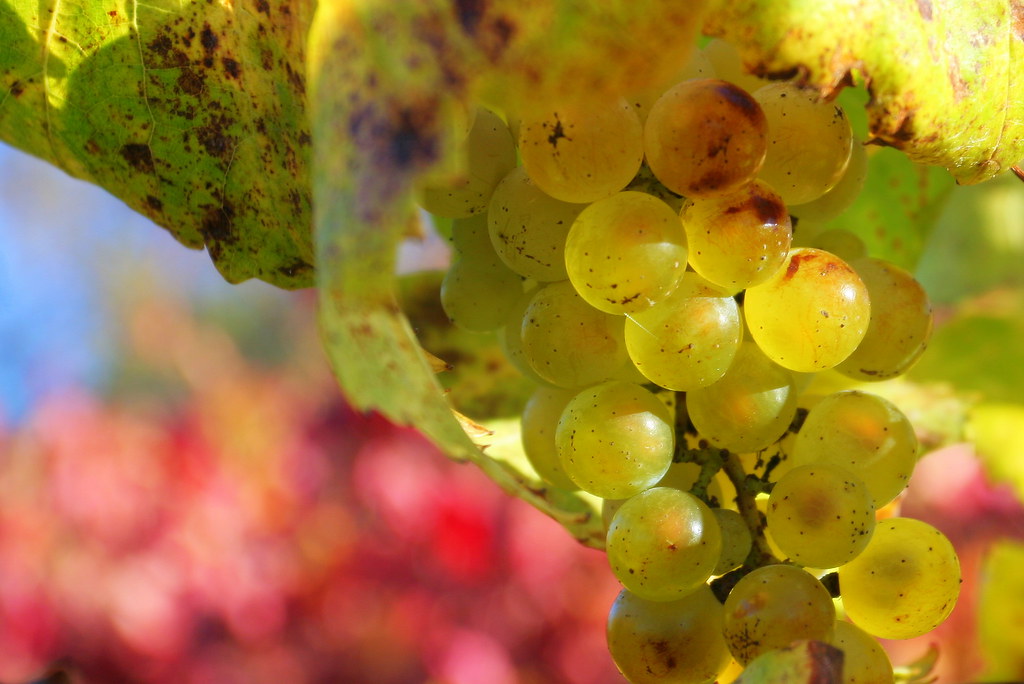
Perhaps the most universal wine in the world, and the easiest to find no matter what airport, hotel or small town bar you are in, Chardonnay is rife with controversy. Love it (like Christine of Girls Go Grape), obsesson it (go #chardcore), or run screaming, this grape has some Gossip Girl legends going for it.
From the thin, inexpensive bulk wines of the south of France and California, to the the richly fragrant and textured wines of Burgundy, there really is a Chardonnay for everyone – that will not compromise on taste, quality or yum factor.
Personally, I was a card carrying member of the Anything but Chardonnay club for years – a victim of too many bad glasses (bottles?) or thin, acidic plonk, or overly oaky, buttery goldenrod and viscous liquids that were equally disappointing to my taste buds.
Now, as both a well educated wine consumer, and an experienced taster – I gravitate tot he higher acid, bright fruity gems of the Sonoma Coast, Anderson Valley and Burgundy (particularly Chablis), as well as Oregon which is increasingly more and more “Burgundian”, while Burgundy becomes something else entirely.
For my Rombauer Chardonnay fans, who enjoy that buttery, creamy style, the creamy rich and powerful Chardonnays of Margaret River, Western Australia are a beautiful way to taste the nuance and longevity without drinking “butter bombs”.
Chablis lovers will delight in Tasmanian Chardonnay, which can be a great way to save over the increasing costs of French examples.
For the best Chardonnay wines, cast a wide net – it is, quite literally the most widely planted grape in the world, and you can find it nearly everywhere.
This sturdy workhorse grape is hardy, adaptable, and malleable – and is the backbone for white wines and sparkling wines alike.
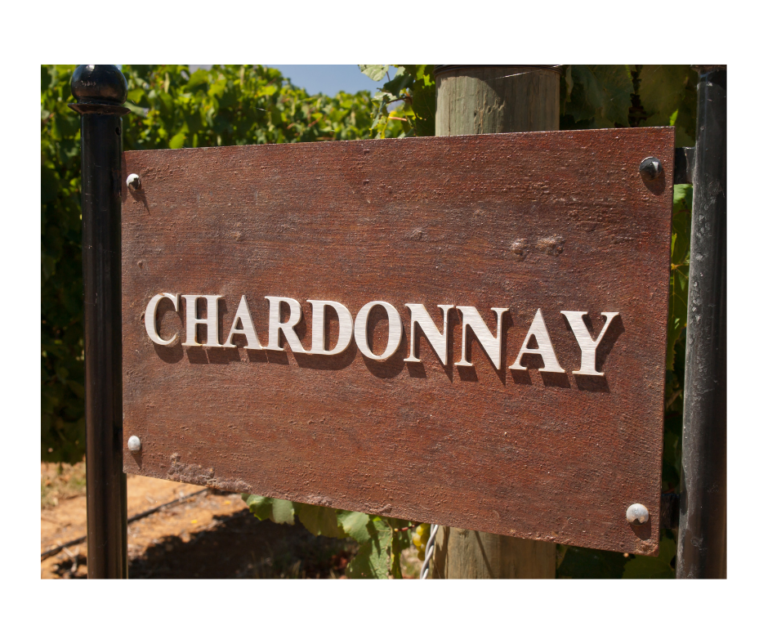
What to look for
Obviously there are hundreds of other regions out there with everything from great to terrible examples of Chardonnay, but this gives you a go to guide to go out and try some.
Don’t be afraid! Hate butter? Head to Sonoma Coast or Chablis for a refreshing, bright, minerally wine.
Love butter? Go see some of the more intense regions of the Côte du Beaune region of Burgundy Napa.
Something in between?
Check out Oregon, Italy and South Africa for some fun wine experimentation!
Hang up the “Anything But” part of your card, and replace it with “Always Be” Chardonnay!
More like this
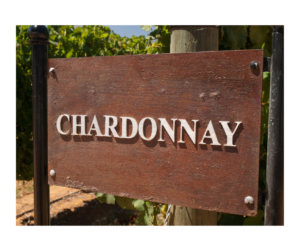
Retire the ABC and drink Chardonnay!
Golden, buttery, oaky.
Bright, citrus, steely.
Tropical oasis, alternative to Sav Blanc.
All of these things can be used to describe Chardonay.
So why are you still saying Anything But Chardonnay?
Domaine Joseph Drouhin – Crossing Borders
Bit by bit, over the last 25 years, the great French houses have been quietly creeping in to the Americas. From Canada, down to California, and on in to South America, prestigious and established french houses have added extensions in the new world.One such house
On the origins of Claret – A primer on Bordeaux
If you’re a fan of the period piece Downtown Abbey as I am, you are no doubt experiencing withdrawal symptoms now that they are on hiatus for the rest of the year. Yet, I am always enthralled at the ritual involved when the wine is selected
Industry Corner: What my story? Storytelling for Digital Marketing

Often times, when I’m reading a story, I ask myself – “What’s the point? Where is this going?” – this is just as important when telling a story, and using storytelling as a key angle in digital marketing.
Sitting here on a Monday morning, as I work on some research and targeting digital marketing campaigns for a client, I asked them “what is the story here? What are you trying to convey?”
The answer, more often than not is I don’t know, or what do you mean.
What do I mean?
When working on digital marketing, whether for myself, or for a client, be it email marketing, tasting room copy or blog posts, it’s important to both understand the story you are trying to tell, as well as understand the message that is being conveyed.
The first question I ask my clients, and myself, is what is my story?

What's the story here?
In the infographic above, as silly as it might seem, the story is about the health benefits of red wine.
To back up these claims, you need to (or have someone else) do the research on why this story is true – and weave those pieces of information in to your story.
- Why is this relevant to your brand?
- How can use this information to benefit your brand?
- What information on your customers mailing list can you use to target this content about your brand?
- How can I use this information be used to reinforce and expand on my story?
So often, digital marketing doesn’t leverage a brand’s story enough, or use relevant market data to back it up. By building a solid foundation, you can then build stories on top of this that change and grow over time.
Using that information to then engage like minded customers, and build brand loyalty is how you build a strong, loyal customer base. Add in some killer wine, and you’ve got the golden ticket Charlie.
By doing a bit of data mining in your own customer database, as well as some additional research on hot topics in the market, you can super power your e-marketing and engage your customers.
Armed with a little research and a some data, as well as a great story, you too can build a powerful list!

Stay tuned for more Marketing Corner tips!
Saracina Vineyards – What’s Next Generation for the Sundial Ranch
Recently, I had the pleasure of renewing my love of one of my favorite wineries in Mendocino’s Hopland region. Several years ago, I would make an annual trip up to Hopland Passport, where i was able to enjoy the many tasting rooms in this historical hamlet.
Saracina Vineyards was founded by the original landowners (Fetzer) in 2001, the 400 acre ranch shows off its history in 140 year old olive trees, massive vegetable gardens, and of course, the vineyard.
With the sale of the historic property and Saracina brand in 2018 to Taub Family Selections, the original beautiful property with a heart for sustainability is once again making a name for itself.
Alex MacGregor, the winemaker who has overseen operations since the beginning of the brand, is a consummate story teller and a wealth of wine country history.
Sitting down with Alex and tasting through the wines of Saracina is a delightful walk through Mendocino’s growth, but steadfastness to maintaining a balance of nature, and industry growth in a still rural county.
MacGregor has seen it all at Saracina. Beginning with the original consulting winemaker, David Ramey – the famed David Ramey I should say, MacGregor has stayed on to ensure that the true spirit of the estate come through.
Here, in this historic corner of Mendocino, many of the old vines are still planted.
The history of the Fetzer family in this area goes back nearly 70 years, and this particular property was a large part of their success as the Sundial Ranch, with the original plantings of wine grapes being as far back as 1860s.
Fetzer Sundial Chardonnay is perhaps the single wine that made this region, and lent credibility and cache to the Mendocino wine growing community in the 1980s and 1990s.
This is a critical juncture in sustainability and organic agriculture – Fetzer was farming the land in balance with nature from as early as 1985.
There is a lot of fruit and olives on property as well to practice biodiversity
In 2018, a portion of the original ranch was sold to Taub Family Selections, who is equally intrigued by unique, sustainable and terroir driven properties.
With this partnership, the Saracina property has been slowly changing out vineyard plantings to find the right varieties for this site, replanting and grafting over to create the perfect balance for the climate. Along with the olive orchard, animals, and gardens, Saracina is a true farm, and not just a “wine farm”.
This big picture view of agriculture is both a look at the past, and the way of the future, particularly in a region plagued by drought and wildfire. Focusing the land on the right varietal for the right place, and the right climate requires some of the land to be fallow and to recover, but it will be worth it to see the results, particularly when some of the original plantings here go back to 1942 and much of that rootstock remains.
With the famed Anderson Valley just over the west ridgeline from Saracina, it’s easy to think that this warmer climate valley might not be suitable for the best wine.
However, with the warm days and cool nights, Sauvignon Blanc thrives here. IT’s not the zesty, acidic, enamel peeling New Zealand style, or the lush, tropical Napa style.
Sitting somewhere in between, this refreshing, bright, and delightful 2019 Saracina Lolonis Vinyard Sauvignon Blanc is from the Lolonis Vineyard in Redwood Valley, located north of Ukiah and Clear Lake. Planted in 1942, this vineyard is dry Farmed and organic, this historic property is great for Sav Blanc. This is a clone of Sav Blanc brought in from Sauternes by the founders of the vineyard, and has a distinctly aromatic but balanced note to it.
On the palate, juicy peaches, Meyer lemons and green apple mingle in a sub-tropical dance with lime zest. The fermentation in old oak gives body but no smoke or wood. |$34
One of the best secrets about Saracina is that it is just over the hill from the famed Anderson Valley. As such, they are able to soruce some spectacular fruit for two wines that would be easily twice the price on the other side of the hill.
The 2019 Saracina Valley Foothills Anderson Valley Chardonnay is a creamy, vanilla custard gem full of baked peaches, and apricot. It’s a riper style but clearly still possesses the finesse and acid of Anderson Valley.
Some barrels wen through malolactic fermentation, and were blended with the remainder, and aged in 2 year old oak, leaving a bright, rich, creamy, not buttery or heavy. |$38
2019 Saracina Unoaked Chardonnay
With no malolactic fermentation on this wine, it’s a fresher style with ripe pears, golden delicious apple and fresh nectarine. The clean mineral finish is refreshing on a warm summer day and this Chablis loving wine writer really loved this wine! I really appreciated the lower ABC (13.2%) which, combined with the price tag make it fabulous summer sipper / porch pounder. |$20
2019 Saracina Day ranch Hollywood Hill Anderson Valley Pinot Noir
From the deep end of Anderson Valley, this a cool site that is easily influenced by the fog from the coast. A blend of clones 667 and 115, the earthy cedar notes are a classic reminder of cool climate Pinot. Forest floor, black cherry and mushrooms mingle with rose petals. A classic! |$55
With the warmer temps at the estate, it’s natural to also focus on bolder reds like the Malbec but to show case those in blends as well. The Malbec, Old Soul blend and Zinfandels are all classic California red wines, and a great backbone for Saracina.
2018 Saracina Skid Row Malbec
Malbec is truly one of my go to winter red wines. There is something about Malbec that is like a warm hug!
This is a relatively new grape for Saracina, planted in 1999.
The bright, bold ruby-garnet color has oodles of blue fruit (classic Malbec), figs, blueberries, and plums with a blanket of cedar chips laying on top. It is not a big bruiser and has soft baking spices that are easy to love. The tannins are soft, which is unusual for a Malbec, and is a delicious slow sipper. |$40
 2018 Sacacina Old Soul Red
2018 Sacacina Old Soul Red
This workhorse red blend is an easy drinking classic Italian field blend (Zinfandel, Petite Sirah, Malbec, Syrah) that pays tribute to the early days of California winemaking, particular with the unique label art.
This wine is just FUN! All juicy bramble berry and chocolate, it’s perfect for a burger or a BBQ.
2018 Sacracina Winters Edge
The Winter Edge is a classic California field blend, something that is a dying breed. These 76 year old vines are a blend of 50% Grenache, 50% Field Blend (in this case, Grenahce, Carignane, and French Colombard). Primarily grown in wild bush trained vineyards, these old ladies are dry farmed and organic.
The French Colombard brings white wine aromatics to what is otherwise a rich red, and it is a bright and inviting wine. There is some serious acid hiding in here, with juicy pomegranate, raspberries and wild strawberries. Ripe plums round out this juicy beast.
Well worth the $30!
Saracina has something for everyone. From bocce ball and corn hole, to olive tree groves and organic gardens, and naturally – the wide variety of wines – it is an icon of Mendocino Country.
A scant hour from Santa Rosa, it’s a destination that should be included on any wine country get away!
Special thanks to Taub Family Selections for the site visit and wonderful experience!

Horizontal Tasting: Mariah Vineyards Pinot Noir from Cartograph and Waits-Mast
I love it when a plan comes together! One of my favorite things about wine, is tasting the expression of the winemaker in the bottle. Every touch, every decision, every nuance in his or her mind ends up in your glass. Pinot Noir particularly responds

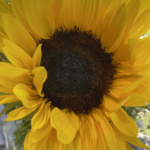
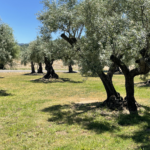
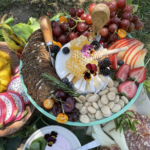
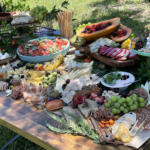
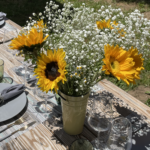
1 thought on “Masciarelli Abruzzo – Elevated Abruzzo”
Feeling great about learning the real soul of Abruzzo. Good post yet again!